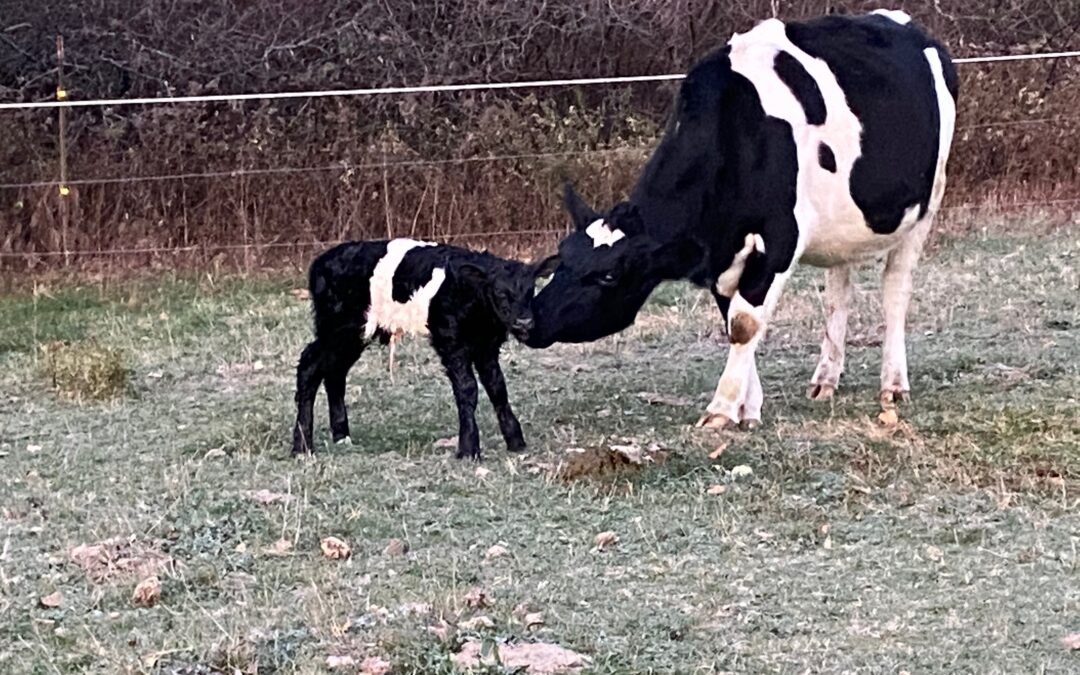Preparing for Calving Season
As the calving season approaches, it’s time to ensure that your farm is fully prepped for the pitter-patter of tiny hooves. At the heart of a successful birthing process is preparation, attention, and a dash of love. Let’s walk through what to expect and how to be thoroughly prepared for when your cows are expecting.
Be Prepared: The Calving Kit
First things first, gather your calving kit. This should include:
- Gloves and OB sleeves for cleanliness and safety.
- OB lubricants to aid in the calving process if necessary.
- 7% iodine solution or Chlorhexidine solution for navel care.
- Clean towels for drying off the newborn calf.
- Umbilical tape or clamps to secure the navel and prevent bleeding.
- Oral calcium and magnesium supplements – consult with your vet on the best choice for your operation.
- Calving chains and handles, if you’re trained in their use.
- Your veterinarian’s number – because it’s always better to be safe than sorry!
Know Your Dates and Data
Keep a close eye on the cows due to calve and their expected dates. Engage with your vet to discuss pregnancy diagnosis to better predict calving times.
Create a Clean Calving Area
A 10’x10’ pen is the minimum recommended size for a clean calving area. It should be free from manure or remnants of previous births and bedded deeply with straw to provide a clean, soft area for calving.
The Calving Process: Stages to Watch For
Stage 1: Preparation (2-6 hours)
The initial stage involves the cow showing restlessness, raising her tail, and possibly separating from the herd. You’ll notice mucous discharge and mild straining. This is when the cervix dilates and the calf gets into the right position for birth.
Stage 2: Expulsion (30 minutes – 4 hours)
During expulsion, contractions become more frequent and intense. Keep an eye out for protruding feet – a sign that birth is imminent. If there’s no progress every 30 minutes, a clean and gentle vaginal exam is warranted to check the calf’s position.
Stage 3: Cleaning (8-12 hours)
After the birth, the placenta should pass. This is an essential part of the process to ensure the health of the cow post-delivery.
Ensuring a Good Start to Life for Your Calves
A clean, dry, and warm environment is crucial. Calves are susceptible to scours and pneumonia if born into wet and dirty conditions. Assess the calf immediately at birth for breathing and the condition of the umbilicus.
Feed the newborn calf 4 quarts of warm colostrum within the first 4 hours. A second feeding should follow 8-12 hours after birth. The antibodies in colostrum are vital within the first 24 hours of life.
Cow and Calf Care After Calving
Monitor both cow and calf closely. The cow should have access to clean water and fresh hay, and the calf’s navel should be treated with an iodine solution.
When to Call the Vet
Don’t hesitate to call the vet if there are complications during any stage of calving or if the cow or calf shows signs of distress.
Tailoring Management Protocols
Every farm is different, and so are the needs of each herd. Work with your veterinary team to develop protocols that reflect the goals and health needs of your cattle.
As we prepare to roll out more resources on calf nutrition, management, cow care, and more, remember that a successful calving season starts with preparation. Keep an eye on our website for expert resources to guide you every step of the way.
Happy calving season! Here’s to healthy cows and thriving calves. 🐄🐮
More Resources
Download this brochure for our comprehensive guide on the calving process.

